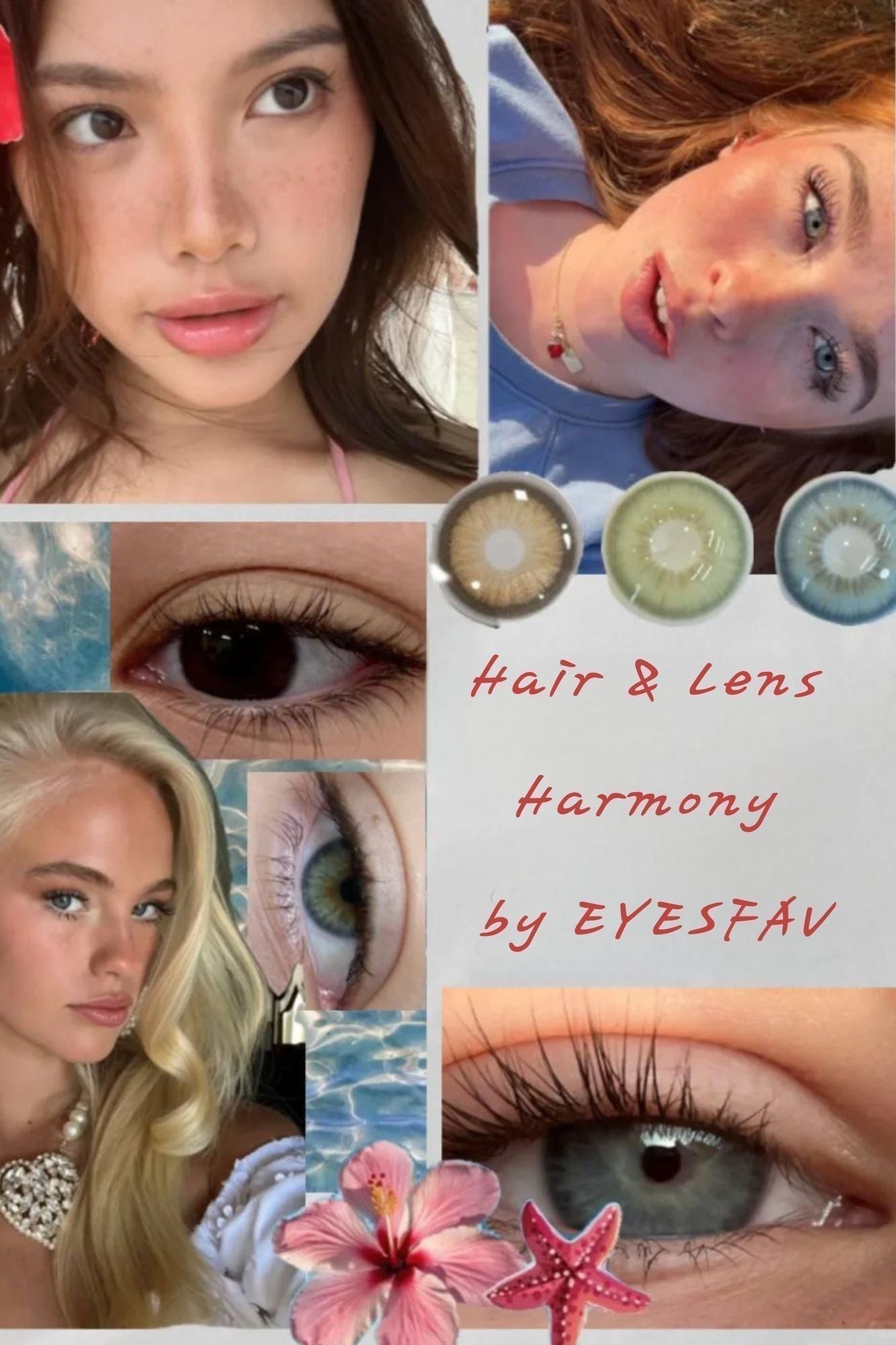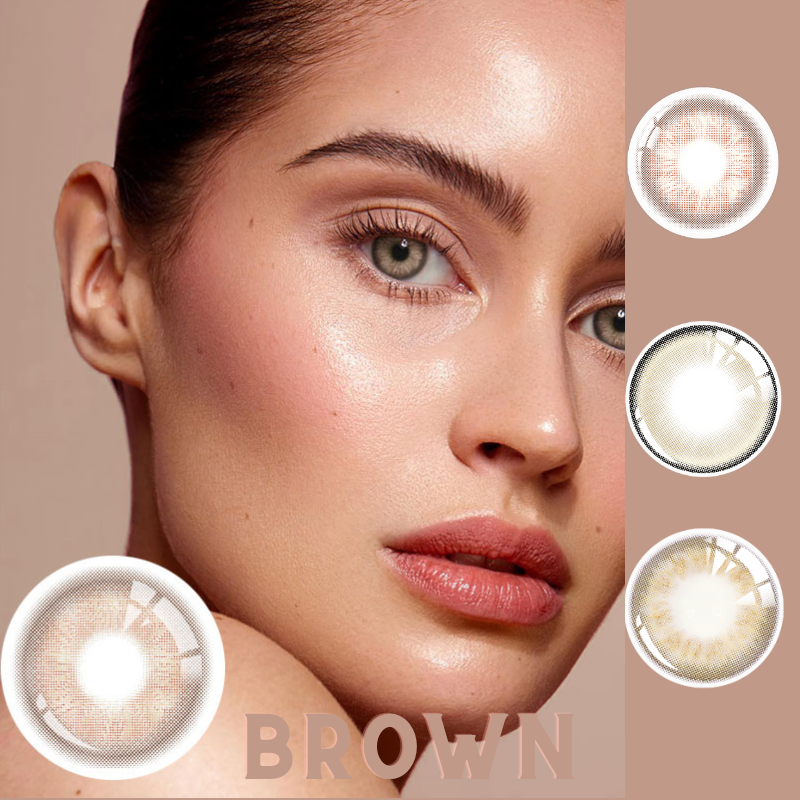جدول المحتويات:
العدسات اللاصقة حلٌّ شائع الاستخدام ومريح لتصحيح البصر. سواء كنت تعاني من قصر النظر أو طول النظر أو اللابؤرية، تُقدّم العدسات اللاصقة بديلاً عمليًا للنظارات الطبية. ولكن كيف تعمل هذه الأجهزة الصغيرة والرفيعة على منحك رؤية واضحة؟ يكمن وراء بساطتها تصميم بصري متطور، مُصمّم لتصحيح أخطاء الانكسار عن طريق تغيير طريقة دخول الضوء إلى عينيك. في هذه المقالة، سنستكشف آلية عمل العدسات اللاصقة، وأنواعها المختلفة، والمواد المستخدمة لضمان تصحيح البصر والراحة.
فهم الرؤية والأخطاء الانكسارية
لفهم كيفية تصحيح العدسات اللاصقة للرؤية، من الضروري أولاً فهم آلية عمل الرؤية نفسها. في الظروف العادية، يدخل الضوء إلى العين عبر القرنية، ويمر عبر الحدقة، ثم تُركّزه العدسة البلورية بدقة على الشبكية. وبشكل أكثر تحديدًا، يجب أن يتجمع الضوء على نقطة محددة تُسمى الحفرة، تقع في مركز الشبكية، للحصول على رؤية واضحة.
ومع ذلك، في حالات عيوب الانكسار، مثل قصر النظر (قصر النظر)، ومد البصر (طول النظر)، والاستجماتيزم، يفشل الضوء في التركيز بشكل صحيح على شبكية العين. في قصر النظر، تقع البؤرة أمام شبكية العين، مما يؤدي إلى ظهور الأجسام البعيدة بشكل ضبابي. أما في مد البصر، فيحدث عندما تقع البؤرة خلف شبكية العين، مما يؤدي إلى صعوبة في رؤية الأجسام القريبة. أما الاستجماتيزم فهو خطأ أكثر تعقيدًا، حيث يتسبب شكل القرنية غير المنتظم في تركيز الضوء على نقاط متعددة بدلاً من نقطة واحدة، مما يؤدي إلى تشوه الرؤية. صُممت العدسات اللاصقة خصيصًا لتصحيح هذه العيوب الانكسارية عن طريق إعادة تركيز الضوء على الحفرة.

مبدأ عمل العدسات اللاصقة
الهدف الأساسي لأي طريقة لتصحيح البصر، سواءً باستخدام النظارات أو العدسات اللاصقة، هو إعادة تركيز الضوء بدقة على الحفرة. ويتحقق ذلك عن طريق ثني (انكسار) الضوء بحيث تُعاد محاذاة نقطة البؤرة مع الشبكية. وتستخدم العدسات اللاصقة، مثل النظارات، مبدأ الانكسار لتصحيح خطأ التركيز الطبيعي للعين.
على سبيل المثال، في حالة قصر النظر، تُستخدم عدسة مُفرِّقة ذات قوة انكسار سالبة لتحريك البؤرة إلى الخلف، بحيث تصطف مع الشبكية. وعلى العكس، في حالة طول النظر، تُستخدم عدسة مُجمِّعة ذات قوة انكسار موجبة لتحريك البؤرة إلى الأمام. تُقاس قوة العدسة اللازمة لتصحيح هذه الأخطاء بالديوبتر، وهي وحدة قياس قوة انكسار العدسة.
من المهم ملاحظة أن حتى الانحرافات الطفيفة في نقطة التركيز قد تؤدي إلى ضبابية الرؤية. إن انحرافًا ولو مليمترًا واحدًا عن نقطة التركيز المثالية قد يؤدي إلى اضطرابات بصرية كبيرة، ولذلك تُعد الدقة في تحديد قوة الانكسار الضوئي اللازمة أمرًا بالغ الأهمية.
أنواع العدسات اللاصقة ووظائفها المحددة
تأتي العدسات اللاصقة بأشكال مختلفة، كل منها مصمم لتصحيح أخطاء الانكسار المحددة:
1. العدسات الكروية
تُستخدم هذه العدسات لتصحيح عيوب الانكسار البسيطة، مثل قصر النظر ومدّ النظر. تتميز بقوة واحدة موحدة عبر العدسة، مصممة لتحويل نقطة التركيز إلى الموضع الصحيح على الشبكية. تدور هذه العدسات بحرية على العين دون التأثير على جودة الرؤية.
2. العدسات التوريكية
صُممت عدسات توريك لتصحيح الاستجماتيزم. بخلاف العدسات الكروية، تتميز عدسات توريك بقوى مختلفة في خطوط الطول المختلفة للعدسة، مما يسمح لها بتصحيح نقاط التركيز المزدوجة الناتجة عن العين المصابة بالاستجماتيزم. يجب أن تبقى هذه العدسات ثابتة على العين لتصحيح الرؤية بشكل صحيح، وتتضمن العديد من تصاميمها ميزات مثل مناطق التثبيت لضمان عدم دورانها.
3. العدسات متعددة البؤر
مع التقدم في السن، قد يُصاب الأشخاص بقصر النظر الشيخوخي، وهي حالة تفقد فيها العين قدرتها على التركيز على الأشياء القريبة. صُممت العدسات متعددة البؤر لتصحيح هذه الحالة من خلال دمج مناطق تركيز متعددة داخل العدسة، مما يسمح لمرتديها برؤية الأشياء القريبة والبعيدة بوضوح. يختلف التصميم باختلاف الشركة المصنعة، ولكن المبدأ العام هو أن العدسة تسمح للعين بـ"مشاركة" الرؤية القريبة والبعيدة من خلال مناطق مختلفة من المنطقة البصرية.
تصميم ومواد العدسات اللاصقة
تُصنع العدسات اللاصقة الحديثة من مواد متطورة تُعزز الرؤية والراحة. وكان أول ابتكار مهم في مواد العدسات اللاصقة هو إدخال الهيدروجيل، وهي مواد بلاستيكية ناعمة ومرنة تمتص الماء. ويُعد امتصاص الماء هذا بالغ الأهمية لأنه يسمح للأكسجين بالمرور عبر العدسة إلى القرنية، وهو أمر حيوي للحفاظ على صحة القرنية.
وقد تحققت القفزة الكبرى التالية مع تطوير عدسات هيدروجيل السيليكون. تتميز مواد هيدروجيل السيليكون بمسامية أكبر من الهلاميات المائية التقليدية، مما يسمح بوصول كمية أكبر من الأكسجين إلى القرنية. وقد جعل هذا التحسن في نفاذية الأكسجين عدسات هيدروجيل السيليكون الخيار المفضل للكثيرين، وخاصةً لمن يرتدون العدسات اللاصقة لفترات طويلة.
تركيب وتكييف العدسات اللاصقة
إن عملية تركيب العدسات اللاصقة أكثر تعقيدًا من مجرد مطابقة مقاس النظارات الطبية. يجب أن تناسب العدسات اللاصقة العين بشكل صحيح، مما يضمن ليس فقط تصحيح الرؤية، بل أيضًا توفير الراحة والحفاظ على صحة العين.
عند تركيب العدسات اللاصقة، يقيس أخصائيو العيون منحنى القاعدة - وهو انحناء السطح الخلفي للعدسة، والذي يجب أن يتطابق تمامًا مع المنحنى الطبيعي للقرنية. كما يُعد قطر العدسة مهمًا لضمان تغطيتها للقرنية بالكامل مع الحفاظ على ملاءمة محكمة ومريحة. يضمن الجمع بين منحنى القاعدة وقطر العدسة محاذاة المنطقة البصرية للعدسة تمامًا مع الحدقة، حيث يمر الضوء من خلالها ليصل إلى الشبكية.








